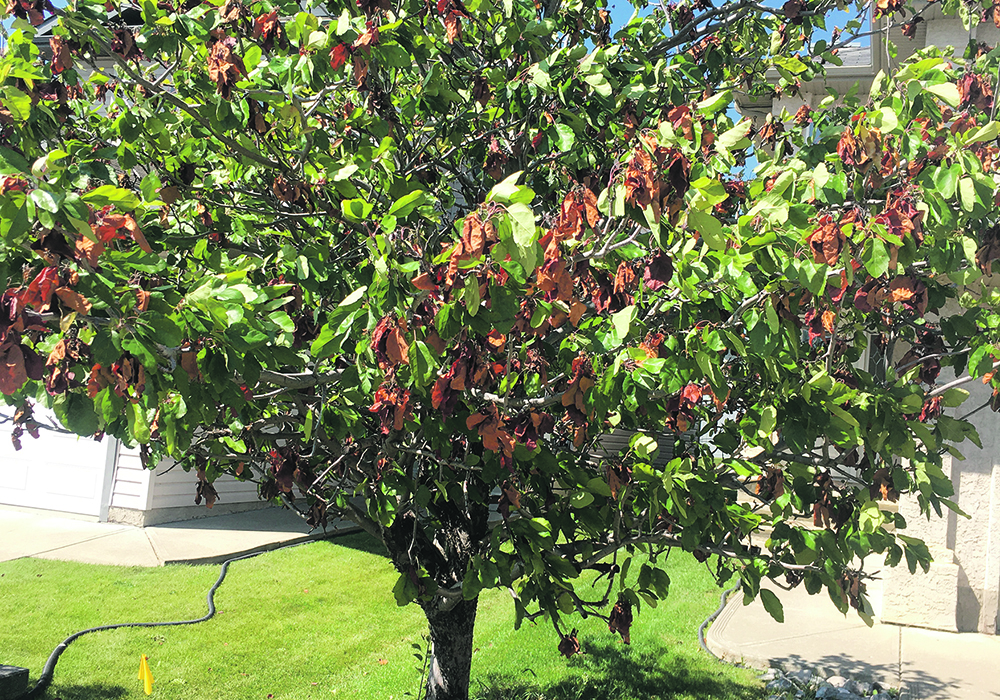A bacterial illness and a fungal disease are appearing in Alberta trees.
Toso Bozic, tree specialist and consultant with Yard Whispers, formerly with Alberta Agriculture, said he is getting reports of fire blight appearing in apple, cherry, plum and mountain ash trees.
Fire blight thrives in moist conditions and temperatures of 22 C to 26 C, and much of the province has seen those conditions in recent weeks.
The bacteria cause parts of the trees to turn brown and then black, with a burned-looking appearance from which comes its name.
Read Also

Feds propose overhaul of chronic wasting disease control program
Chronic Wasting disease control program getting updated by Canadian Food Inspection Agency with feedback encouraged from producers.
“In extreme situations it can kill the whole thing but most of the time it hits one or two branches,” said Bozic.
The condition can spread rapidly so once recognized, quick action should be taken, he said.
“What you can only do is take a sharp pruning tool and disinfect after every cut. Put them in a garbage bag and go to the landfill immediately. If you leave it, it’s going to come back.”
There are few chemical controls for fire blight and Bozic has seen it occur in most parts of Alberta. It has been known to infect crab apple, hawthorn, chokecherry and other members of the rose family, including mountain ash, cotoneaster and raspberry.
Agriculture Canada information indicates that fire blight infects through blossoms, leaves or wound in tree stems or trunks. It overwinters and then spreads in the following spring by rain, wind or boring insects.
Unsterilized pruning tools are also a culprit.
Bronze leaf disease, a fungal ailment, affects trembling aspen, Swedish aspen and tower poplar and is spread through spores.
Bozic said it generally appears in late July and early August. Lower leaves start to turn brown but retain their green veins. Symptoms may also be randomly scattered throughout the tree. Eventually affected leaves become bronze and stay on the tree rather than falling off in autumn.
Bozic said leaves from any affected tree should be collected and destroyed. Dead branches should be pruned. Though he first noticed the tree ailment in southern Alberta, he has since seen it all over the province.
















